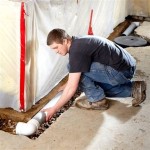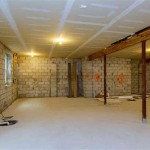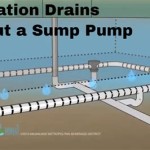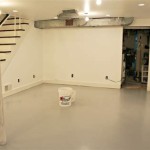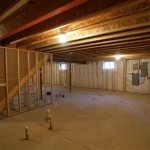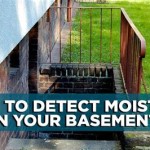How To Finish A Basement With a Sump Pump
Finishing a basement can significantly increase the usable living space in your home. However, basements are prone to moisture problems, particularly if the house is situated in a humid climate or an area with a high water table. Installing a sump pump is essential for managing moisture and preventing flooding. A sump pump collects water that enters the basement through cracks in the foundation or leaks in the plumbing, transferring it away from the house. This article will discuss essential steps for finishing a basement while ensuring it remains dry and safe with the help of a sump pump.
1. Assess Your Basement's Condition
Before starting any finishing work, it's crucial to assess the basement's overall condition. This involves identifying areas that require attention and understanding the source of potential water infiltration. Start by looking for signs of past water damage, such as mold growth, cracked walls, or discolored flooring. Pay particular attention to the walls and floor surrounding the sump pump pit. If you observe any cracks or leaks, consider addressing them before proceeding with finishing work. Remember to consult a professional contractor for any significant structural repairs or waterproofing needs.
During your assessment, determine the size and location of the sump pump pit. Ensure the pit is large enough to accommodate the sump pump and any necessary accessories like a battery backup system. If the pit is too small or in an inconvenient location, you might need to consider relocating or expanding it.
2. Install a Reliable Sump Pump
A sump pump is the cornerstone of a dry basement. Invest in a quality pump with a proven track record and sufficient horsepower to handle potential water volumes. Select a model with an automatic float switch that activates the pump when water levels rise in the pit. Consider adding a battery backup system to ensure the pump operates even during a power outage.
When positioning the sump pump, make sure it's centered within the pit and the discharge pipe is properly secured and directed away from the foundation. The pipe should extend a safe distance from the house to prevent water from pooling near the foundation. If you have a horizontal discharge pipe, ensure it has a slight upward slope to facilitate efficient water drainage.
3. Waterproofing the Basement
Waterproofing is crucial for preventing moisture from seeping into the basement. Apply a waterproof membrane to the basement walls and floor. This membrane acts as a barrier, preventing water from penetrating the interior. Consider using a sealant to fill any cracks or gaps in the foundation walls and floor.
To further enhance moisture control, install a vapor barrier on the basement floor. This barrier will prevent moisture from rising from the ground and entering the living space. The vapor barrier should be placed directly beneath the flooring material to prevent the growth of mold or mildew. Consult a professional contractor to evaluate your basement's need for additional waterproofing measures.
4. Finishing the Basement
Once the waterproofing and sump pump system are in place, you can proceed with finishing your basement. Begin by installing insulation to create a comfortable living space. Choose an insulation material suitable for damp environments and follow the manufacturer's instructions for proper installation. Next, add drywall or other wall coverings and consider installing a ceiling.
Select flooring materials that are moisture-resistant and easy to clean. Options include vinyl flooring, laminate flooring, or ceramic tiles. Choose a paint that is resistant to moisture and mold growth and apply it to the walls and ceiling. Ensure that electrical wiring and plumbing are installed correctly and meet all safety regulations.
As a final step, ensure proper ventilation in the basement to prevent the build-up of humidity. Consider adding a dehumidifier to help control moisture levels. A well-ventilated and properly finished basement can transform into a comfortable and functional living space.

Clever Sump Pump Cover Ideas Basements Plus

Hiding A Sump Pump Hide Basements Cabinet Pumps Basement Ideas Baseme Bathroom Design Finishing

Clever Sump Pump Cover Ideas Basements Plus

How To Hide Your Sump Pump Hole

Need To Cover Your Sump Pump 5 Great Ideas That Work

9 Sump Pump Cover Ideas To Hide A In Basement

Brenneco Plumbing Backup Sump Pumps

Start Your Basement Finishing Project Cleanspace Northwest News And Events For

Basement Waterproofing Quality 1st Renews Westfield Finished With New Flooring Sump Pump

Sump Pump Closet Basement Makeover Remodeling Remodel Diy
Related Posts
